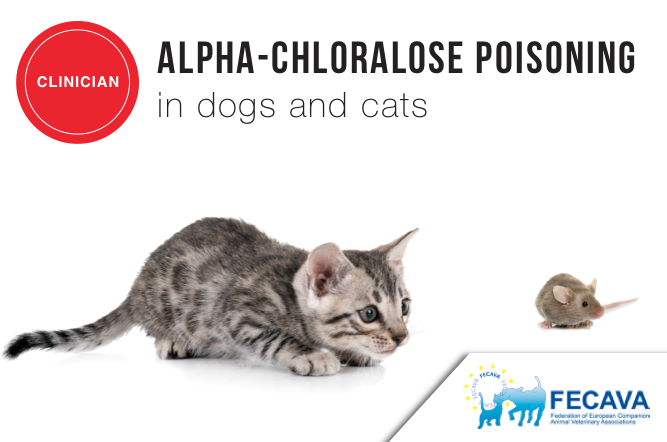
Alphachloralose, a novel rodenticide, found to be toxic to cats and dogs
Finnish Safety and Chemicals Agency (Tukes) began to study alphachloralose (AC) toxicity in 2019 after several Finnish veterinarians started to discuss it on social media. AC works as an anesthetic. Especially cats are prone to AC toxicity because the substance also acts when a pet eats a mouse that has ingested the poison. When treated properly, the prognosis is good.
In autumn 2018 Finnish veterinarians started asking about possible AC poisoning on their social media platform. The typical case was an outdoor cat that returned home wobbling. Officials in Finnish Food Authority (Ruokavirasto) notified the Finnish Safety and Chemicals Agency (Tukes) about the possibility that AC could be causing these poisonings. Tukes conducted an enquiry to Finnish veterinarians about pets’ chemical poisonings in spring 2019. 63 veterinarians reported 96 cases where AC was the suspected toxin. Only a few of these cases concerned dogs.
AC was historically used as an anesthetic for example for laboratory mice. Its effect as a rodenticide is based on its fast-acting anesthetic properties. The substance itself should be well-protected inside a mousetrap but when a cat finds an apathetic, slow-moving mouse, it tends to prey on it. AC then causes poisoning to the cat as well. Dogs more likely to eat the poison itself.
All rodenticides which contain anticoagulant activity were limited to professional use only at the beginning of 2018. Instead, homeowners started to use AC-containing rodenticides. Earlier there have been some occasional rumours of AC poisonings in Sweden, Norway and the Netherlands.
The reported symptoms of poisoning are hypothermia, ataxia, apathy, muscle twitching, drooling and coma. Symptoms start quickly and can last even for 24 hours. Detecting AC in the patient’s urine or tissues is the only way to confirm poisoning but usually typical symptoms are evident. When AC poisoning is suspected the patient needs symptomatic treatment. Iv-fluids and oxygen supply as supportive care should be used. Anticonvulsants such as diazepam or midazolam are used when the patient is convulsing. Effective warming is essential if the patient is hypothermic. Intralipid infusion treatment has also been found effective for AC poisoning. The prognosis is good with proper treatment.
Press Release from the Finnish Safety and Chemicals Agency (Tukes)
Leave a reply

Always at autumn we see these cases as winter is around corner and rodents come in buildings. Some cats cone just too late
Reply